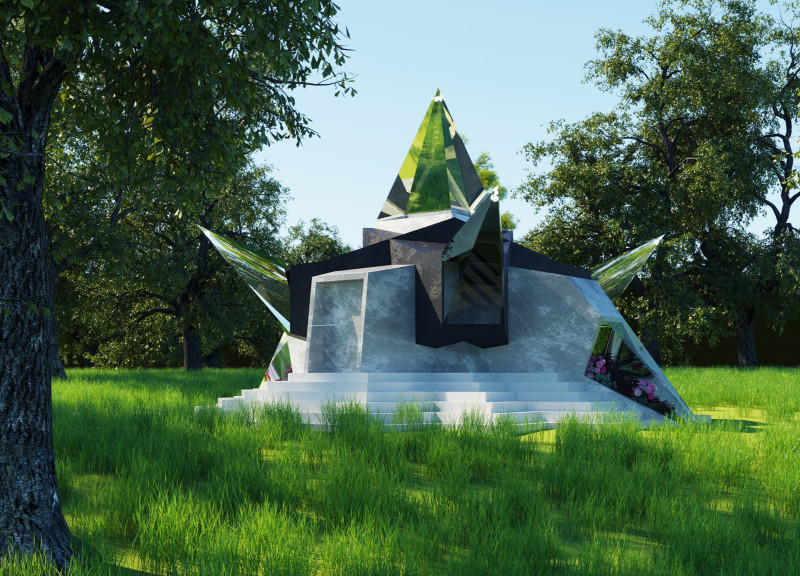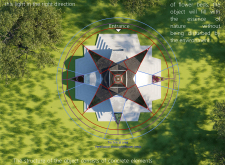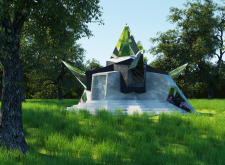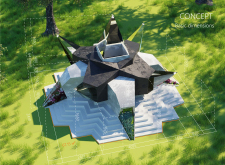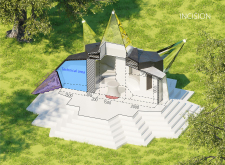5 key facts about this project
At its core, the Tiny Kiwi Meditation Cabin represents a concept that merges aesthetics with functionality. The architecture emphasizes simplicity and serenity, creating a space where individuals can disconnect from the chaos of daily life and reconnect with themselves. Its form takes inspiration from organic shapes found in nature, embodying a sense of fluidity and connection to the surrounding environment. This approach not only enhances the visual appeal but also complements the project's purpose.
The primary function of the cabin is to provide an uninterrupted space for meditation. It features a central core that acts as a focal point, with seating arranged around it to facilitate both individual and group meditative practices. This spatial configuration encourages a sense of community while also allowing for moments of personal introspection. The design ensures that every inch of the cabin is dedicated to creating a conducive atmosphere for mindfulness, with carefully planned views of the landscape that instill a feeling of openness and tranquility.
A significant aspect of the Tiny Kiwi Meditation Cabin is its innovative design approach. The integration of light is thoughtfully executed, using prismatic elements that capture and filter sunlight, casting calming patterns throughout the interior. This play of light not only enhances the aesthetics but also contributes to the overall atmosphere, evoking a sense of calm and facilitating deeper meditation. The architectural design in this regard emphasizes the importance of sensory experiences in enhancing the meditative process.
The materiality of the cabin is another critical feature that enhances its connection to nature. The primary use of concrete provides a durable foundation while also enabling the building to blend harmoniously into its surroundings. Large glass panels strategically placed within the structure allow for natural light to flood the interior and create visual links to the outer environment, fostering a sense of being at one with nature. The inclusion of organic materials, such as plants and flowers integrated into the design, further enhances the aesthetic and functional relationship between the cabin and its setting.
Unique design details are prevalent throughout the Tiny Kiwi Meditation Cabin. The entrance seamlessly guides visitors into the tranquil space, creating an immediate sense of calm upon arrival. The seating areas are thoughtfully designed to promote comfort and engagement, emphasizing the importance of physical well-being alongside the mental benefits of meditation. The overall architecture reflects an understanding of both functionality and sensory engagement, prioritizing the needs of the user in a holistic manner.
The Tiny Kiwi Meditation Cabin stands as a testament to the potential of architecture to create spaces that nurture well-being. By prioritizing connection with nature, thoughtful material choices, and innovative approaches to light and space, this project encourages introspection and mindfulness. Each element of the design is carefully crafted to enhance the meditation experience, creating a retreat where individuals can truly find peace.
For those interested in exploring the architectural plans, sections, and designs of the Tiny Kiwi Meditation Cabin, a deeper dive into its presentation will offer further insights into the thoughtful architectural ideas that define this unique project. Engaging with these details can enrich one's understanding of how architecture can serve not just as shelter but as a catalyst for personal and spiritual growth.


